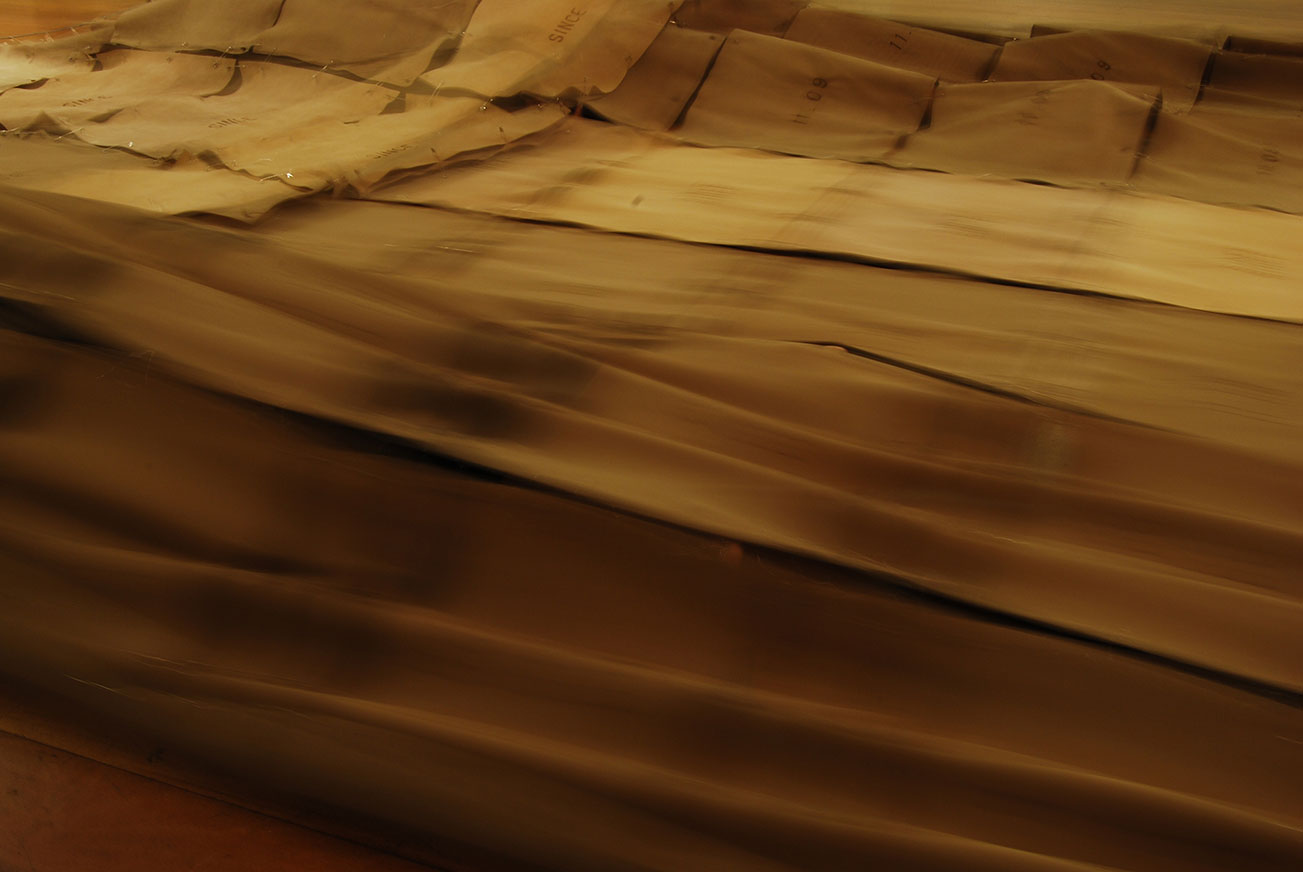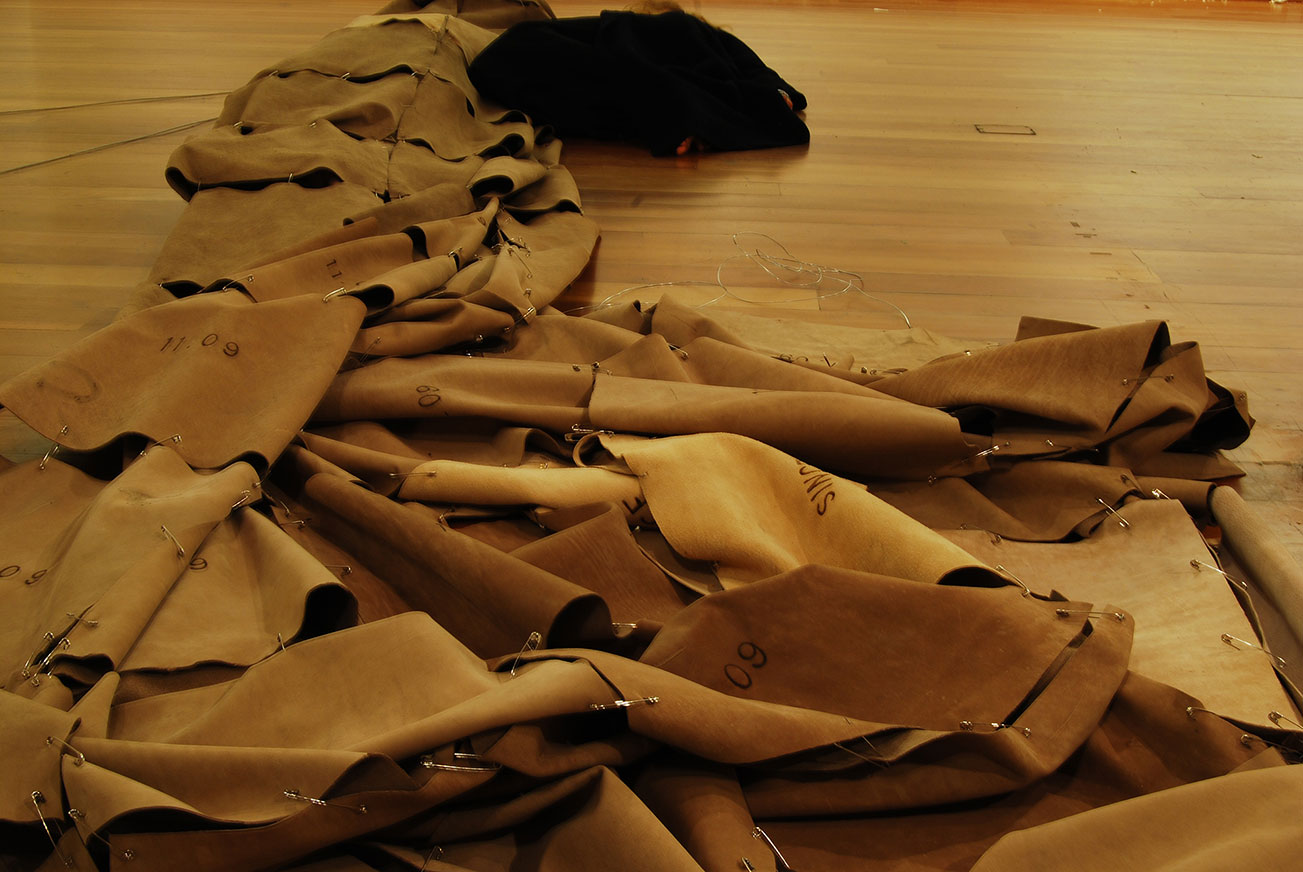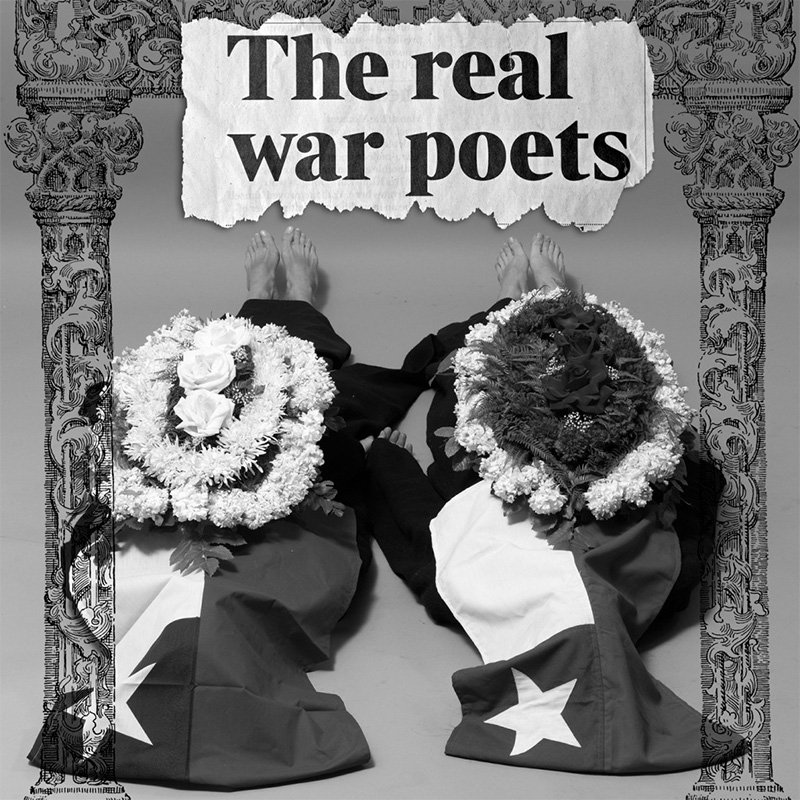SINCE 11.09. is a work that reflects on various aspects of memory and its location, in the context of contemporary history, introduced in the sample of facilities “Haber”, curated by visual artist Carlos Montes de Oca at the Museum of Visual Arts. Our work consisted of a large cloak that hung from the ceiling of the room and dragged on the floor, made of 105 pieces of leather pyrography with the date “11.09.” and the word “SINCE”. Two large photographs also hung at its sides, showing our covered faces, except the eyes, by the same piece of leather. Of all the events of 11.09. throughout history, most recently and closer to our current reality is the coup of 11th September 1973 in Chile, by the Commanders in Chief of the Armed Forces and the General Director of Police, who overthrew the government of President Salvador Allende and established a dictatorship until 1989, and the attacks of 11th September 2001 on the twin towers of World Trade Center in New York and the Pentagon in Washington DC, USA, carried out by the Islamic movement Al Qaeda and its leader, Osama Bin Laden, who began a politico-religious war, which is still being waged. There are several readings involved in this work, starting with the word “SINCE”, which in Spanish means “From”, but in English is pronounced as “sins”, thus recalling our “sins”. The absence of the year on the date set out “11.09.” leaves open the interpretation as to which it year it relates to, generating an endless oscillation between past and present, absence and presence, consciousness, memory and death, victims and victimizers. Marked by fire on the skin of a creature that was alive and want to activate memory recall, from a date, various events that have changed our lives since its occurrence. The sequence of the word SINCE over the mantle has the form of the Latin cross, evoking various religious issues that concern us. The Latin cross is the most popular religious symbol in Christianity, much as “cross” comes from the Latin verb “cruciare”, meaning “torture”, and that its use relates to a method of execution of Jesus Christ. By contrast, in Christianity the cross represents Christ’s victory over sin and death, achieved precisely because of it. This death-life duality that represents the image of the cross with images is emphasized by our open and closed eyes, placed on both sides of the mantle, one to his left and one on your right. The left and the right are not to be limited to concepts of spatial orientation, but also within Christianity, again, are references to good and evil, as when Matthew quotes Jesus as saying that those who locate on the right inherit the kingdom while the left will stop the eternal fire. Indeed, the left and right refer also to the political, where good and evil change places with the observer. These politico-religious confrontations visually reiterate our censored faces, leaving only the eyes that poke through a crack, while the leather is held together with safety pins that obscure our view. With this we mark the burka, that traditional headdress worn by women in conservative Muslim countries. The burka is a dress, an implement that hides the physical appearance of a woman. SINCE 11.09. speaks of the difficulty of seeing clearly in the world, so much for one as for the other visual field, their realities are narrow interpretation. Finally, under our covered faces, the mark “ANYONE” – “EVERYONE” (None – All), reaffirms the fact that today we are all victims and perpetrators alike, fulfilling both roles. Some are the aggressors, while others are the reverse.






















